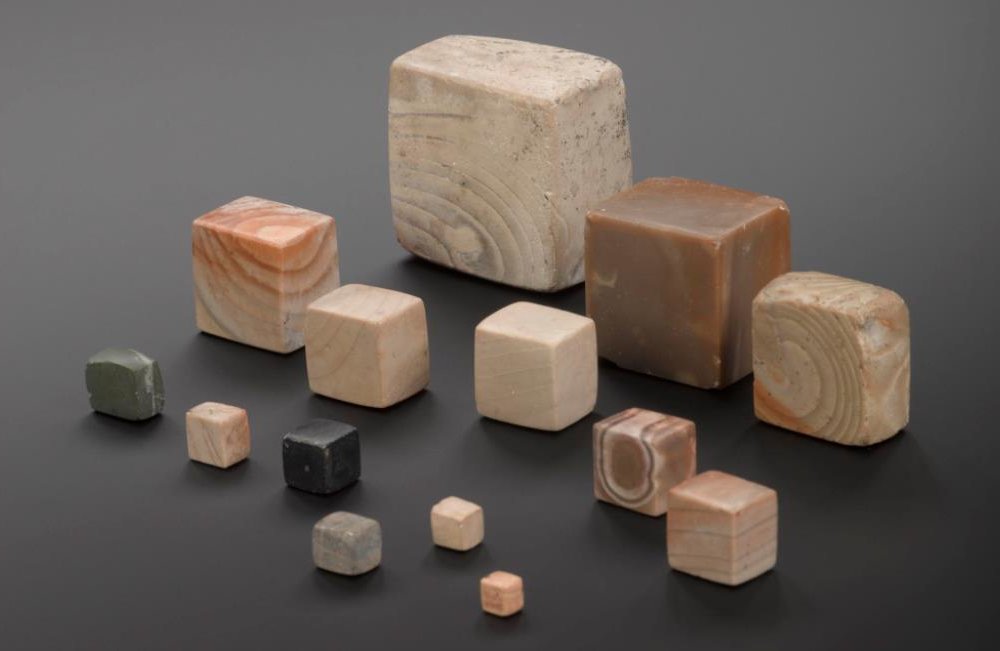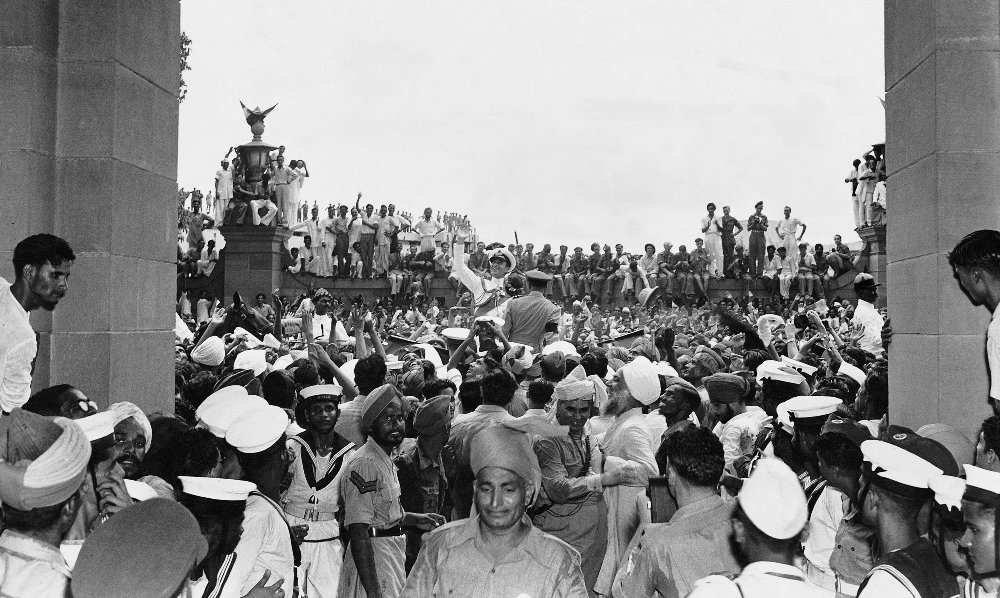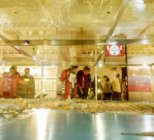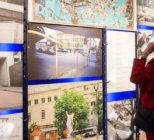How would you describe your job as an exhibition designer?
I work as part of the internal design team at the Science Museum Group. We have a busy programme of exhibitions and work on all sorts of projects, from displays and temporary exhibitions to permanent galleries. The content is varied so with each project you discover more about a new subject and get to work with colleagues from a range of different specialisms and backgrounds.
It is my job to design the overall layout of the show, all the build elements, which includes showcases, walls and object plinths. I work with a team of creatives, usually including graphic designers, lighting designers and A/V designers to come up with the overall look and feel of the exhibition.
What are the key areas you consider when embarking on the design of a new exhibition at the Science Museum?
Usually the key areas to consider are: “What is the exhibition about?” In terms of an overarching message; “Who it is being designed for?” “Who is the target audience?” “How long do you have to work on the project?” As we are often working to very tight time scales and “Which museum in the Science Museum Group is it being displayed in and how big is the space?” Also, we need to consider whether it is expected to tour from one museum to another. And finally, “How much is the budget?”

When designing an exhibition, what tools can you use to create the right atmosphere (lighting, sound, AV)?
There are a variety of ways of creating the right atmosphere in an exhibition. It is the combination of the structural elements, graphics, AV and lighting. Often, we use a slightly theatrical approach as we are trying to tell a story. There needs to be a certain pacing throughout the exhibition with some “wow” moments that will inspire and excite visitors and quieter moments for contemplation and reflection, so visitors don’t become overwhelmed with information.
In the ‘Illuminating India: 5000 Years of Science & Innovation’ exhibition we wanted to avoid a superficial or tourist-style view of India. The story underpinning the whole narrative is that the environmental and social conditions in India provided the need for the technologies that were developed there. The exhibition has a series of graphic banners with views of India, that show real places which put the objects we are displaying into context. The colour scheme and materials we’ve chosen reflect Indian culture with rich silks and antique gold tones but presented in a subtle way so the objects themselves are complimented rather than overshadowed by the design.

How has exhibition design developed over the past decade?
Exhibition design is constantly changing as new materials and production techniques are developed. From innovations in technology to new fabrics with every new project design challenges are overcome and the boundaries of what is possible are always being pushed.
How do you ensure accessibility to as many people as possible?
The layout you create in the exhibition needs to work for visitors with a range of accessibility needs. You must make sure that all visitors feel comfortable looking at the objects, reading the graphics and watching any films. The space needs to be large enough so that people don’t feel too crowded and wheelchair users and visitors with prams can move around easily. We work closely with a team that includes access specialists to ensure that our exhibitions are accessible to as many visitors as possible.
In what ways can you ensure the interpretation entices audiences of various ages and abilities?
We place a great focus on the visitor experience and feedback from our audience researchers means we are constantly learning from every exhibition. We can learn which elements were successful and which didn’t translate in the way we had envisaged. This allows us to refine our methods each time to create even more successful exhibitions.
For ‘Illuminating India: 5000 Years of Science & Innovation’ we have tried to find a balance between having too much or too little information about the objects on display. We’ve selected certain objects that highlight key issues of the period and chosen to provide more background on how they work or who invented them. In this way, we can provide more context for visitors through graphics, photos and also films. For example, the historic Raman spectrometer has an accompanying graphic with a diagram explaining how spectrometers work with information on the inventor CV Raman. Raman received the Nobel Prize for his work in 1930 and was the first Indian scientist to be recognised in this way.

What have been the aims and objectives of the upcoming Illuminating India Season?
There are two exhibitions planned for the season: one entitled ‘Illuminating India: Photography: 1857-2017’ and the other ‘Illuminating India: 5000 Years of Science & Innovation’.
The intellectual rationale behind both exhibitions is to highlight the creativity of India through the development of the sciences and the arts. Both shows have subtle synergies in the stories they tell. Firstly, they highlight how the Indian subcontinent has historically been a place that explores intersections between contrasting world views. Secondly, they provide an insight into the unique approach to science and art that the region adopts. Lastly, they both highlight the fusion of the traditional with the technological to reveal the importance awarded in Indian culture to the pursuit of knowledge and understanding of the world.
How has the design of this exhibition played a role in key decisions of the narrative and objects to go on show?
When planning exhibition designs it is crucial to work closely with the content and interpretation team as they will have developed the narrative. Once the storyline is planned we can then start to think about how the objects in the physical space can be used to tell that story.
An important factor in planning is the condition of the objects themselves as they will often have special conservation or security requirements. They can be too fragile to touch or light sensitive so we need to consider how we can display them in a way so that they aren’t damaged. This provides a certain amount of constraint over what you can do and how you can display them in the best way to allow the story to be told.
Illuminating India runs at the Science Museum from October 4, 2017 to March 31, 2018.
In Focus
This Q&A is part of an In Focus Feature on Exhibition Design
Illuminating India runs at the Science Museum from October 4, 2017 to March 31, 2018










